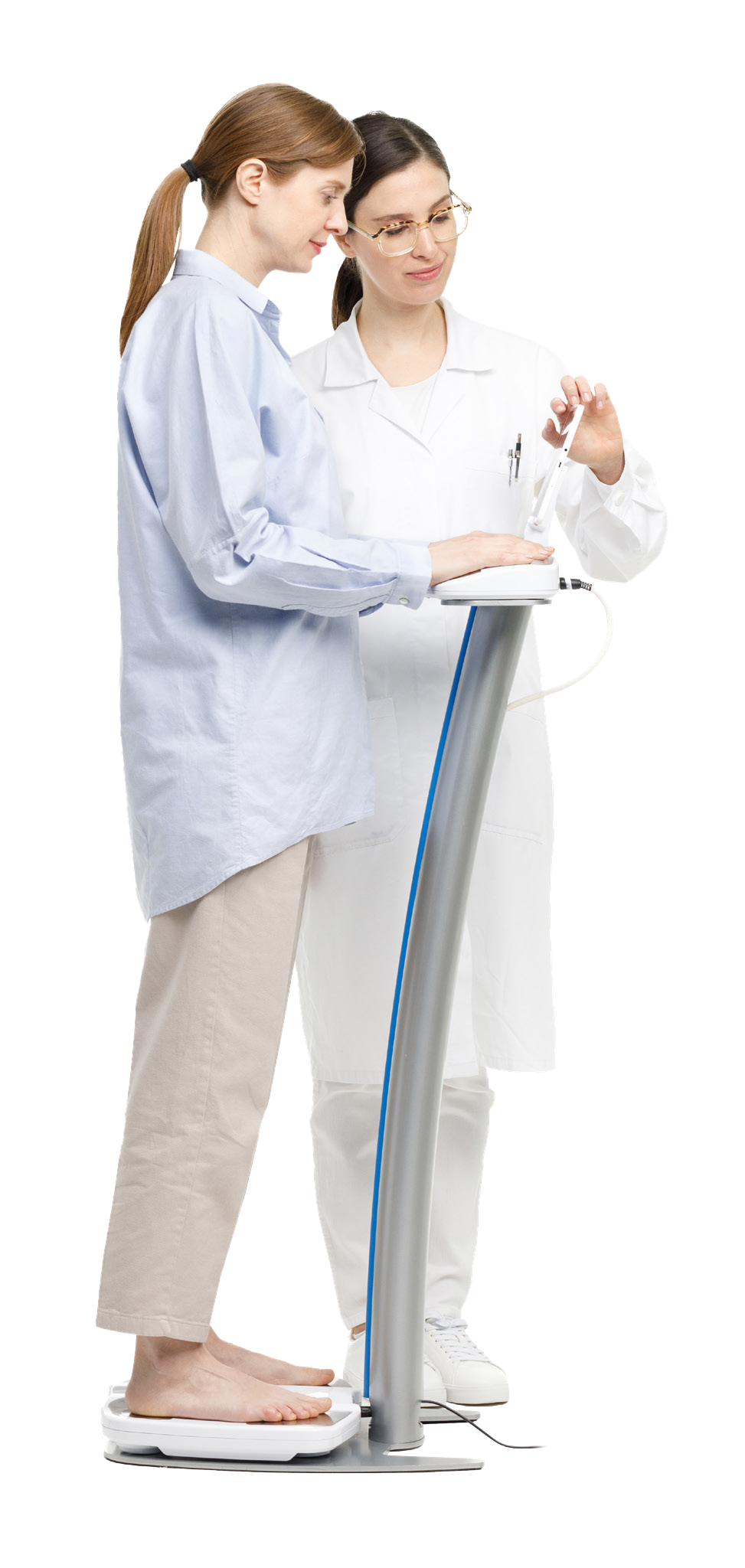Being diagnosed with breast cancer was a shock, and surviving it has been brutal for April Folweiler of New London, Missouri. She remains positive and is managing her condition with the help of the Blessing Breast Center team.
“I was at my yearly check-up, and my doctor suggested I get a mammogram,” the 43-year-old wife, mother and grandmother recalled. “I wondered if I was old enough because I thought the age was 50.”
For women at a normal risk level for breast cancer, a baseline mammogram is recommended between the ages of 35 to 40. If no concerns are identified at that time, a woman should have a mammogram every year starting at age 40, in consultation with their primary care provider.
“He told me I was old enough and might as well get it done that day,” April continued. “I had the mammogram. The next day I got a call that I needed to come back.”
April would be diagnosed with breast cancer that had spread to other parts of her body. She underwent a double mastectomy, the removal of 12 lymph nodes, radiation therapy, chemotherapy, immunotherapy and a total hysterectomy to lower the level of the type of hormone in her body on which the cancer was feeding, growing and spreading.
Fate wasn’t through with April. A year out from her surgery, she showed signs of lymphedema, a condition that effects 1 in 3 at-risk cancer patients.
“That never crossed my mind,” April said. “I really didn’t know anything about it. I had seen people who had the sleeve but I didn’t know what it was for.”
The sleeve to which April refers is a compression sleeve for lymphedema. In breast cancer patients, lymphedema commonly affects one or both arms by retaining fluid and swelling greatly in size. The sleeve helps reduce the symptoms by moving accumulated fluids away from the affected area. April would become very familiar with and grateful for the compression sleeve.
What causes lymphedema?

Lymph nodes are part of the body’s lymphatic system that carry fluid from tissues back to the bloodstream. The lymphatic system can also spread cancer cells through the body. When surgeons remove cancer from where it started, they often remove nearby lymph nodes too, either for biopsy, to make sure they do not contain cancer, or to reduce the risk of the cancer returning.
When lymph nodes are removed, as were 12 of April’s, it can leave the affected area without a way to drain off fluid, because lymph vessels run into a dead end where the node used to be, causing fluid to collect in an extremity. And that is lymphedema.
“A breast cancer survivor’s arm can get very big and swollen due to lymphedema,” said Jessica Nuebel, BSN, RNC-OB, nationally accredited patient navigator, Blessing Breast Center. “It’s disfiguring and can be embarrassing for body image.”
How the Blessing Breast Center detects lymphedema
Using a tape measure to determine the size of a person’s extremities and detect lymphedema was the gold standard across the country for many years. But there is an element of human error in this process. Not every time is the tape measure going to be placed in the exact same spot for re-measurement.
The Blessing Breast Center replaced the tape measure with technology called Sozo. The Sozo machine looks like a high-tech bathroom scale, but instead of weight, it measures the body’s fluid and tissue status over time to help identify lymphedema earlier in the disease process when it can be successfully treated and possibly reversed.
Patients whose cancer treatment qualifies for Sozo scanning, as did April’s, receive their first scan before treatment begins, before the lymphatic system would have an interruption in its drainage. This provides a baseline fluid and tissue measurement. Following scans look for changes in the baseline measurement. The patient is screened every three months for the first three years, then every six months for up to two years, and then annually thereafter.
April meets and deals with another challenge
After a year of Sozo testing, April’s reading suddenly shot up. She was not too surprised as she had been having pain in one of her left arm.
“I’m thinking, ‘Here we go! I am going to have that big arm,’” April said.
Jessica calmed April’s fears, telling her Blessing offered therapies for lymphedema. They started with the least invasive, a trip to Denman Medical Equipment and Supply to purchase a compression sleeve. Jessica told her to wear the sleeve every day for one month, removing it only to sleep.
April did that. Her next Sozo reading fell by nearly 83%.
“I was like, ‘Are you kidding me? How in the world did it go down so fast,’” April exclaimed.
“A lot of people think, ‘Oh my gosh, I don’t want to wear that sleeve,’” she continued. “I thought it was going to be the most uncomfortable thing ever. It didn’t bother me a bit. That sleeve is like a lifesaver. It works magic.”
Blessing also offers physical therapy for patients with lymphedema. Whichever treatment is appropriate, the magic begins with Sozo scanning at the Blessing Breast Center.
“I can’t imagine how painful it would have been had it got out of control,” April said. “Now, I have no pain. My arm feels absolutely normal again.”
For more information on this technology, go to blessinghealth.org/sozo.
